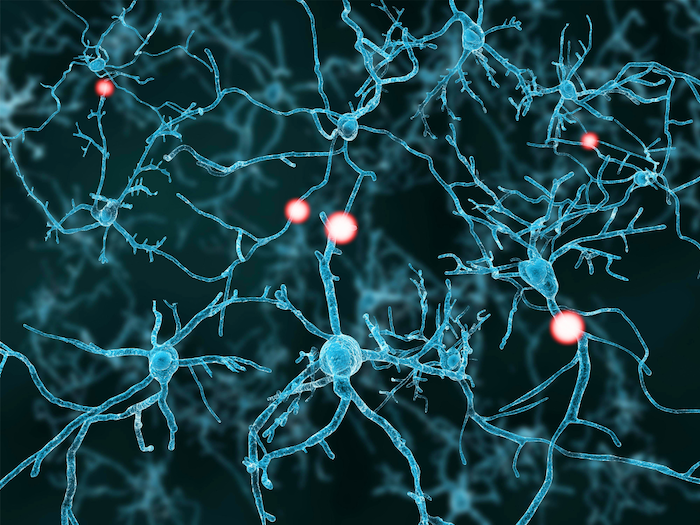Life Science Industry: An Overview of Its Impact , Types and Importance
The Life Sciences Industry is an ever-growing industry that is responsible for the development of new technologies, medicines, and therapies that help improve human health and well-being. It encompasses a broad range of scientific disciplines that study living organisms and their interactions with each other and their environment. This blog post will explore what Life […] The post Life Science Industry: An Overview of Its Impact , Types and Importance appeared first on LifeSci Voice.

The Life Sciences Industry is an ever-growing industry that is responsible for the development of new technologies, medicines, and therapies that help improve human health and well-being. It encompasses a broad range of scientific disciplines that study living organisms and their interactions with each other and their environment. This blog post will explore what Life Sciences are, the Life Sciences Industry, and its impact on our lives, the types of companies in the Life Sciences Industry, and commonly asked questions about the industry.
The Life Sciences Industry is not only responsible for developing new technologies and therapies, but it is also a significant contributor to the global economy. According to a report by the Pharmaceutical Research and Manufacturers of America, the pharmaceutical industry alone directly employs over 800,000 people in the United States, with an additional 3.2 million jobs supported indirectly through supply chains and other industries.
What are Life Sciences?
Life Sciences are a group of scientific disciplines that study living organisms, including human beings, animals, and plants. The Life Sciences are diverse, and they include fields such as biology, genetics, microbiology, biochemistry, biotechnology, and ecology.
The primary goal of Life Sciences is to gain a better understanding of living organisms and their processes to improve human health, the environment, and agriculture. Additionally, the Life Sciences Industry is heavily regulated, and companies must adhere to strict regulations to ensure that their products are safe and effective. The regulations governing the industry vary by country and region.
Life Sciences explore the structure, function, and behavior of living organisms at the molecular, cellular, and organismal levels. They aim to understand how living organisms interact with each other and their environment, how they develop and grow, how they function, and how they can be influenced or manipulated for human benefit.
Life Sciences are critical in advancing medical research and developing new therapies for diseases. For example, the field of genetics has led to the development of personalized medicine, where treatments are tailored to an individual’s genetic makeup. In agriculture, Life Sciences are used to develop crops that are resistant to pests and diseases and can withstand environmental stressors.
Life Sciences are an essential group of scientific disciplines that study living organisms and their interactions with each other and their environment. They play a crucial role in advancing medical research, developing new therapies, and improving agricultural practices.
What is the Life Sciences Industry?
The Life Sciences Industry comprises companies involved in the research, development, and manufacturing of products and services used to improve human health, animal health, and the environment. The industry includes pharmaceutical companies, biotechnology companies, medical device companies, and diagnostic companies. The Life Sciences Industry is one of the fastest-growing industries in the world, and it is estimated to be worth over $2 trillion.
The Life Sciences Industry is a diverse and rapidly growing industry that plays a vital role in improving human health, animal health, and the environment. Its impact on our lives is significant, and the industry’s contributions to the global economy and innovation cannot be overstated.
Moreover, the Life Sciences Industry is also a major driver of innovation, with companies investing heavily in research and development to develop new drugs, therapies, and medical devices. In fact, the industry is responsible for many of the medical breakthroughs we have seen in recent years, such as new cancer treatments and gene therapies.
However, the industry also faces several challenges, including high costs of research and development, stringent regulations, and the need to balance profits with the need to provide affordable healthcare to patients. Additionally, the COVID-19 pandemic has highlighted the importance of the Life Sciences Industry in responding to global health crises and has accelerated the need for innovation and collaboration within the industry. Despite the challenges it faces, the industry continues to push the boundaries of scientific discovery and technological innovation, providing hope for a healthier and more sustainable future.
What is the impact of the Life Sciences Industry on lives?
The Life Sciences Industry has had a tremendous impact on the lives of people around the world. The industry is responsible for the development of new technologies, medicines, and therapies that help improve human health and well-being. Over the years, the industry has made significant strides in the areas of disease treatment, diagnosis, and prevention, leading to better health outcomes for individuals and communities.
One of the most significant impacts of the Life Sciences Industry has been the development of new therapies and treatments for diseases. Many of these treatments have transformed the lives of patients who were previously without effective treatment options. For example, the development of antiretroviral therapy for HIV/AIDS has turned a once-fatal disease into a manageable chronic condition. Similarly, the development of targeted therapies for cancer has led to improved survival rates and better quality of life for patients.
Moreover, the Life Sciences Industry has played a critical role in the development of diagnostic tools that enable early detection and treatment of diseases. Early detection allows for more effective treatment options, leading to better outcomes for patients. For instance, the development of rapid diagnostic tests for infectious diseases like malaria and tuberculosis has allowed for quicker diagnosis and treatment, reducing the mortality rate associated with these diseases.
The Life Sciences Industry has also developed new medical devices that have revolutionized the way diseases are treated. For example, the development of artificial hearts, pacemakers, and other implantable devices has allowed patients with heart disease to live longer, healthier lives. Additionally, advances in medical imaging technology have led to earlier and more accurate diagnosis of diseases, allowing for earlier intervention and better outcomes.
Furthermore, the Life Sciences Industry has contributed to environmental conservation by developing technologies that help protect endangered species and clean up pollution. The industry has developed bioremediation techniques that use living organisms to remove pollutants from the environment, helping to reduce the impact of human activity on ecosystems.
The Life Sciences Industry has had a significant impact on the lives of people around the world. Its contributions to the development of new therapies, diagnostic tools, and medical devices have transformed healthcare and led to better health outcomes for patients. The industry’s commitment to environmental conservation has also helped to protect our planet’s natural resources. The continued growth and innovation in the Life Sciences Industry provide hope for a healthier and more sustainable future.
What are the types of companies in the Life Sciences Industry?
The Life Sciences Industry comprises several types of companies, including pharmaceutical companies, biotechnology companies, medical device companies, and diagnostic companies.
- Pharmaceutical companies are among the most well-known and prominent companies in the Life Sciences Industry. These companies develop and manufacture drugs used to treat diseases and medical conditions. They invest heavily in research and development to discover new drugs that can improve health outcomes. Pharmaceutical companies conduct clinical trials to test the safety and efficacy of their drugs, and they must obtain regulatory approval before they can be marketed and sold. The process of developing a new drug can be lengthy and costly, and many pharmaceutical companies collaborate with academic research institutions and other companies to share knowledge and resources.
- Biotechnology companies are involved in the development of new therapies, vaccines, and diagnostic tests that use biological processes to improve health outcomes. Biotechnology is a rapidly evolving field that combines biology, chemistry, engineering, and computer science. Biotechnology companies use living organisms and biological systems to develop new products and services. For example, they may use genetic engineering techniques to modify living organisms to produce drugs, vaccines, or other therapies. Biotechnology companies often collaborate with academic research institutions and other companies to share knowledge and resources.
- Medical device companies develop and manufacture devices used in medical procedures and treatments. These devices can range from simple surgical tools to complex machines used in diagnostic imaging. Medical device companies must comply with strict regulatory requirements to ensure that their products are safe and effective. The process of developing and manufacturing medical devices can be complex and costly, and many companies collaborate with academic research institutions and other companies to share knowledge and resources.
- Diagnostic companies develop and manufacture tests used to diagnose medical conditions. These tests can range from simple blood tests to complex genetic tests used to identify genetic diseases. Diagnostic companies must comply with strict regulatory requirements to ensure that their tests are accurate and reliable. The process of developing and manufacturing diagnostic tests can be complex and costly, and many companies collaborate with academic research institutions and other companies to share knowledge and resources.
FAQs
- What makes up the life science industry?
The life science industry comprises various fields of study that focus on living organisms, their function, behavior, and structure, including biology, biotechnology, pharmaceuticals, genetics, and biomedical engineering.
- What is an example of life sciences?
An example of life sciences is pharmacology, which is the study of drugs and their effects on living organisms. It involves the discovery, development, and evaluation of drugs for the prevention, diagnosis, and treatment of diseases.
- What career can I do within Life Sciences?
There are numerous career options within the life sciences, such as biotechnologists, microbiologists, biochemists, geneticists, pharmacologists, and biomedical engineers, to name a few.
- Why is it called life science?
The term “life science” refers to the scientific study of living organisms, their structure, function, and behavior. It encompasses a wide range of fields, including biology, biotechnology, pharmacology, and genetics.
- What is the future of the life science industry?
The future of the life science industry looks promising, with advances in technology, such as CRISPR gene editing, personalized medicine, and artificial intelligence, opening up new possibilities for disease prevention and treatment. The industry is expected to continue growing, driven by aging populations and the increasing demand for innovative medical solutions.
6. How do biotechnology companies differ from pharmaceutical companies?
Biotechnology companies use biological processes to develop products and services, while pharmaceutical companies develop drugs. Biotechnology companies often focus on developing therapies that use biological processes to improve health outcomes, while pharmaceutical companies focus on developing chemical compounds that can be used to treat diseases.
7. What is the process of developing a new drug?
The process of developing a new drug can take several years and involves several stages, including preclinical research, clinical trials, and regulatory approval. The process can be expensive, and it requires significant investment in research and development.
The post Life Science Industry: An Overview of Its Impact , Types and Importance appeared first on LifeSci Voice.
What's Your Reaction?

































